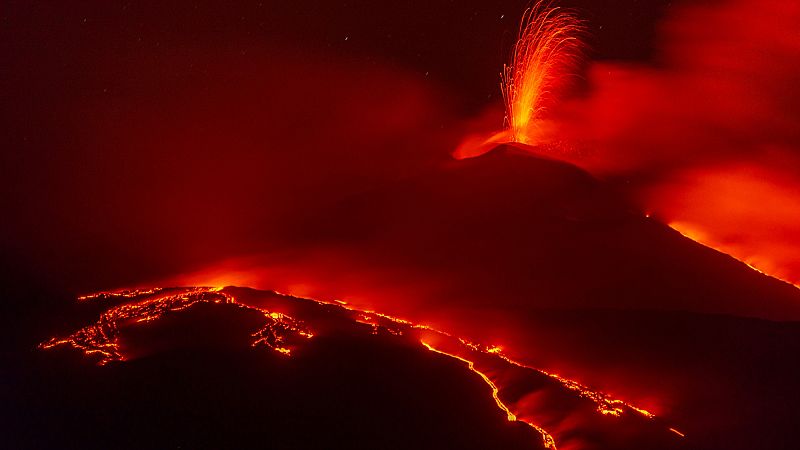Earthquake data could hold the key to predicting Mount Etna’s next eruption, study finds

Mount Etna is one of the world’s most active volcanoes. Located on the east coast of Sicily, it erupts multiple times per year - most recently in June this year.
While it is somewhat possible to predict eruptions, a new study publishedin Science Advances proposes a new prediction method that analyses earthquake patterns. It could allow for earlier and better preparedness.
How to predict volcanoes
Scientists currently monitor Mount Etna by looking at seismic, geological, geophysical, and geochemical data, especially how magma moves in the upper crust. From this, they are able to get a sense of whether the volcano will erupt shortly, as when magma erupts on the surface, it becomes lava. But oftentimes, there’s not a lot of time between an alert and aneruption.
This new study offers a different paradigm: looking at earthquakepatterns and magma movements on a deeper level.
Earthquakes and volcanoes are often interconnected. Earthquakes occur along tectonic plate boundaries, and Mt. Etna is situated right at the meeting point of the African and European tectonic plates. Small and big earthquakes affect the volcano’s magma movement, potentially influencing the eruption.
A new method
The study, conducted by researchers National Institute of Geophysics and Volcanology, analysed two decades' worth of earthquake data from Mount Etna.
Researchers honed in on the “b value,” which basically assesses the proportion of small to large earthquakes. They found a correlation between volcanic activity and b value: the ratio changed as the magma rose through the crust. By plotting the “b value” over time, they could identify some early signs of volcanic eruption.
“Our results show that monitoring the b value over time offers a valuable opportunity to track magma movements from deep to shallow portions of the plumbing system and could be integrated into Etna’s multiparametric surveillance system to improve the assessment of impending eruptions,” the authors write.
Avoiding catastrophe
Earlier and more accurate prediction is crucial for the communities surrounding Etna. According toNASA, nearly one-third of Sicily’spopulation lives along the slopes of the volcano. June’s eruption saw ash plumes of 6.5 kilometres.
The authors see this new method as a way to avoid catastrophe, both at Mount Etna and other similar volcanoes.
“The b value could be used as an eruption precursor for other volcanoes where a sufficient number of earthquakes is available, ultimately leading to better management of volcanic hazard and public safety,” they write.

